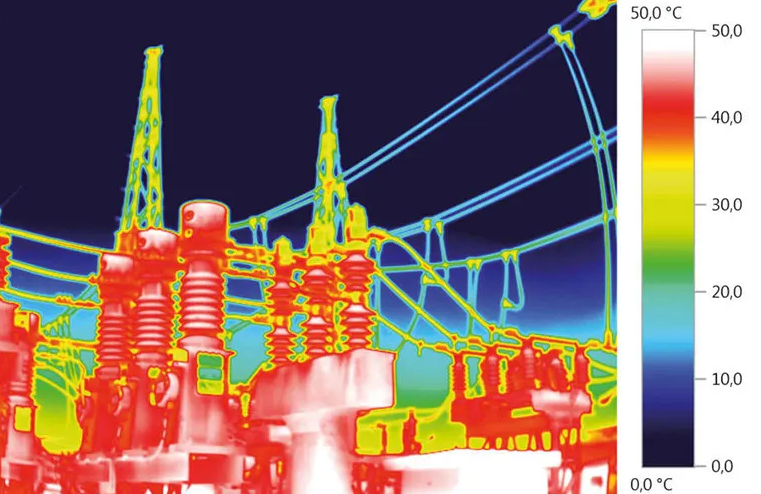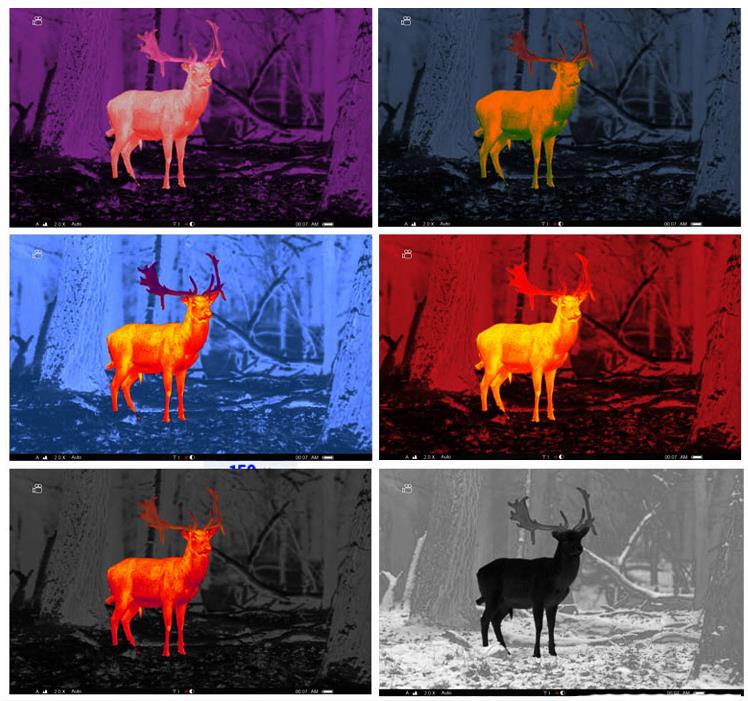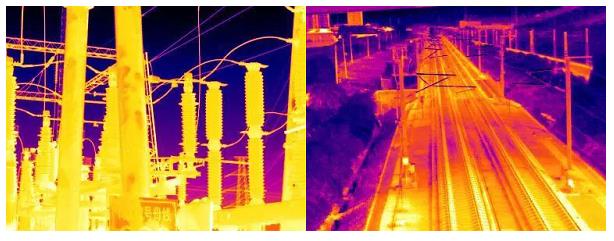Infrared thermal imaging technology plays an increasingly important role in today's society, with its application range expanding from industrial detection to security monitoring to medical diagnosis. However, this technology is not omnipotent, and its effect will be affected by a variety of environmental factors. This article will explore in depth the main environmental impacts on infrared thermal imaging and how to avoid these impacts in practical applications.
1. Impact of atmospheric environment
Atmospheric absorption
Gases such as water vapor and carbon dioxide in the atmosphere absorb part of the infrared radiation, causing the signal received by the thermal imager to weaken. This effect is particularly evident in the long-wave infrared region. How can we deal with it? We can reduce absorption by selecting a suitable atmospheric window band, or use an atmospheric correction algorithm to compensate for this effect.
Atmospheric scattering
Suspended particles in the atmosphere scatter infrared radiation, reducing image contrast and clarity. This is like our vision becomes blurred when we drive in foggy weather. For this, image enhancement algorithms can be used to improve image quality.
Atmospheric turbulence
Air flow can cause jitter and distortion of thermal images. Imagine looking at a distant scene in a hot desert, will it also be distorted? Solutions include using image stabilization technology and multi-frame averaging and other processing methods.

2. Effect of ambient temperature
Ambient temperature changes
Ambient temperature fluctuations can affect the performance and measurement accuracy of thermal imagers. Just like how we feel in cold and hot environments. To this end, temperature compensation technology and regular calibration can be used to ensure measurement accuracy.
Thermal stratification effect
In a closed space, temperature stratification can affect the accuracy of thermal imaging. This is like the temperature distribution inside a high-rise building. Solutions include reasonable arrangement of measurement points and consideration of temperature gradient factors.
3. Effect of surface properties
Emissivity differences
Differences in emissivity on the surfaces of different materials can cause "false images" in thermal images. Imagine the difference in temperature perception between a mirror and a wooden board in the sun. For this, emissivity correction is required based on the material properties of the object being measured.
Reflection interference
Smooth surfaces reflect thermal radiation from surrounding objects, affecting the measurement results. Just like metal surfaces in the sun make us feel particularly hot. Solutions include adjusting the measurement angle and using reflection shielding technology.
4. Effect of meteorological conditions
Precipitation effects
Precipitation such as rain and snow absorbs and scatters infrared radiation, reducing the quality of thermal images. This is like the situation where the wipers do not clean the windshield when driving in the rain. Countermeasures include using protective shields and choosing the right time to measure.
Wind speed effect
Strong winds will accelerate heat exchange on the surface of objects and affect temperature distribution. Imagine what it feels like to stand in a strong wind in winter. Solutions include setting up windbreaks and taking wind speed factors into account for corrections.

Sunlight effect
Strong sunlight will cause the surface temperature of objects to rise, affecting the accuracy of thermal images. This is like the temperature inside a car parked in the sun in summer. The impact can be reduced by choosing the right measurement time and using sunshade facilities.
V. Influence of equipment factors
Lens contamination
Dust, water droplets, etc. on the lens will affect the quality of thermal images. This is like when we look at things with dirty glasses. Regular cleaning and the use of protective measures are necessary.
Focal length adjustment
Improper focal length adjustment will cause blurred thermal images. Just like when we use a camera to take pictures, the focus is not accurate. The focal length needs to be adjusted correctly according to the measurement distance.
Field of view selection
Inappropriate field of view will affect the measurement range and resolution. This is like the problem of choosing magnification when we observe with a telescope. The appropriate lens should be selected according to actual needs.
6. Other influencing factors
Electromagnetic interference
Strong electromagnetic fields can affect the electronic components of thermal imagers, causing image noise. This is just like when we use mobile phones and are interfered by high-voltage lines. The impact can be reduced through electromagnetic shielding and filtering technology.

Vibration effect
Mechanical vibration can cause thermal images to be blurred and distorted. Imagine the effect of taking pictures in a bumpy car. Solutions include using anti-vibration mounts and image stabilization technology.
Conclusion
Although infrared thermal imaging technology is powerful, it is still restricted by a variety of environmental factors. Understanding these influencing factors and taking corresponding countermeasures is crucial to improving the effect of thermal imaging applications. With the continuous advancement of technology, I believe that in the future we will be able to better overcome these environmental limitations and allow infrared thermal imaging to play a greater role in a wider range of fields. As users, we need to continue to learn and explore, and accumulate experience in practice to truly realize the potential of this technology. Let us look forward to the bright future of infrared thermal imaging technology together!


